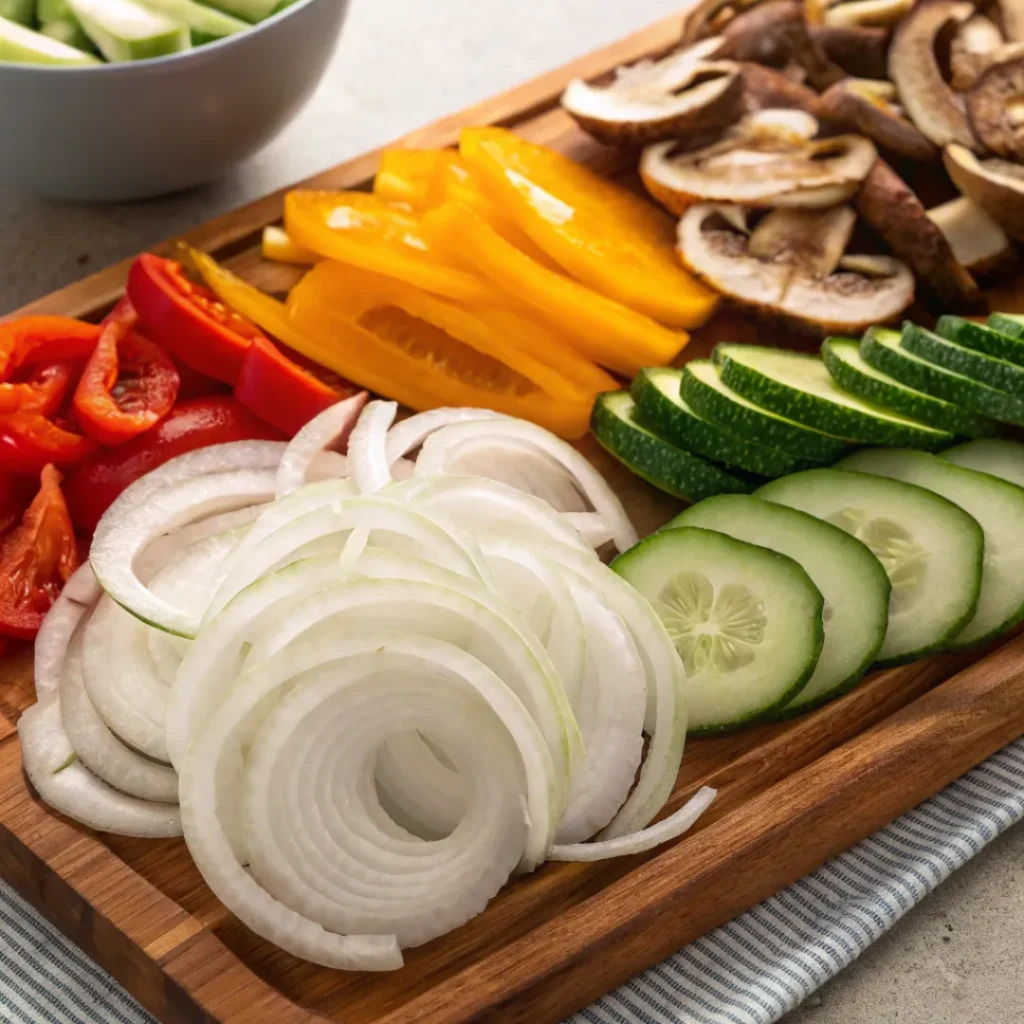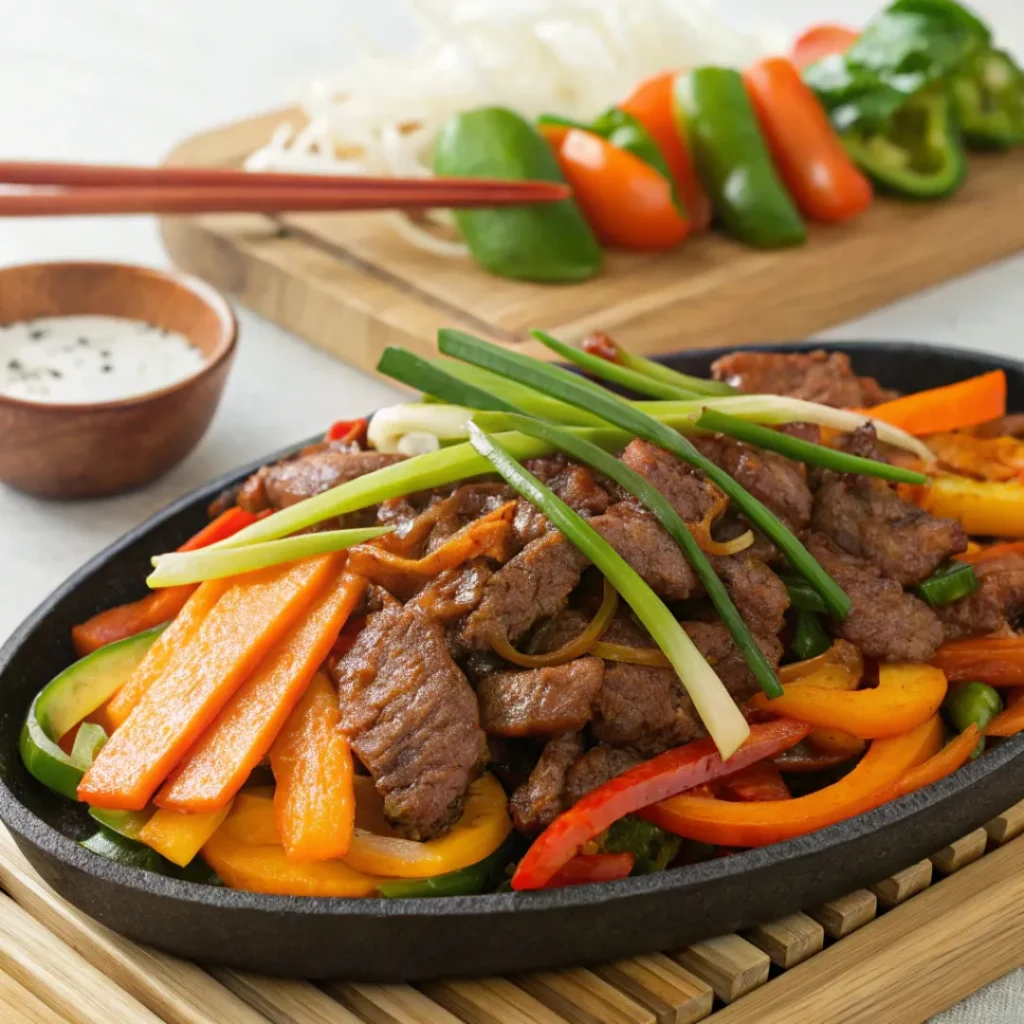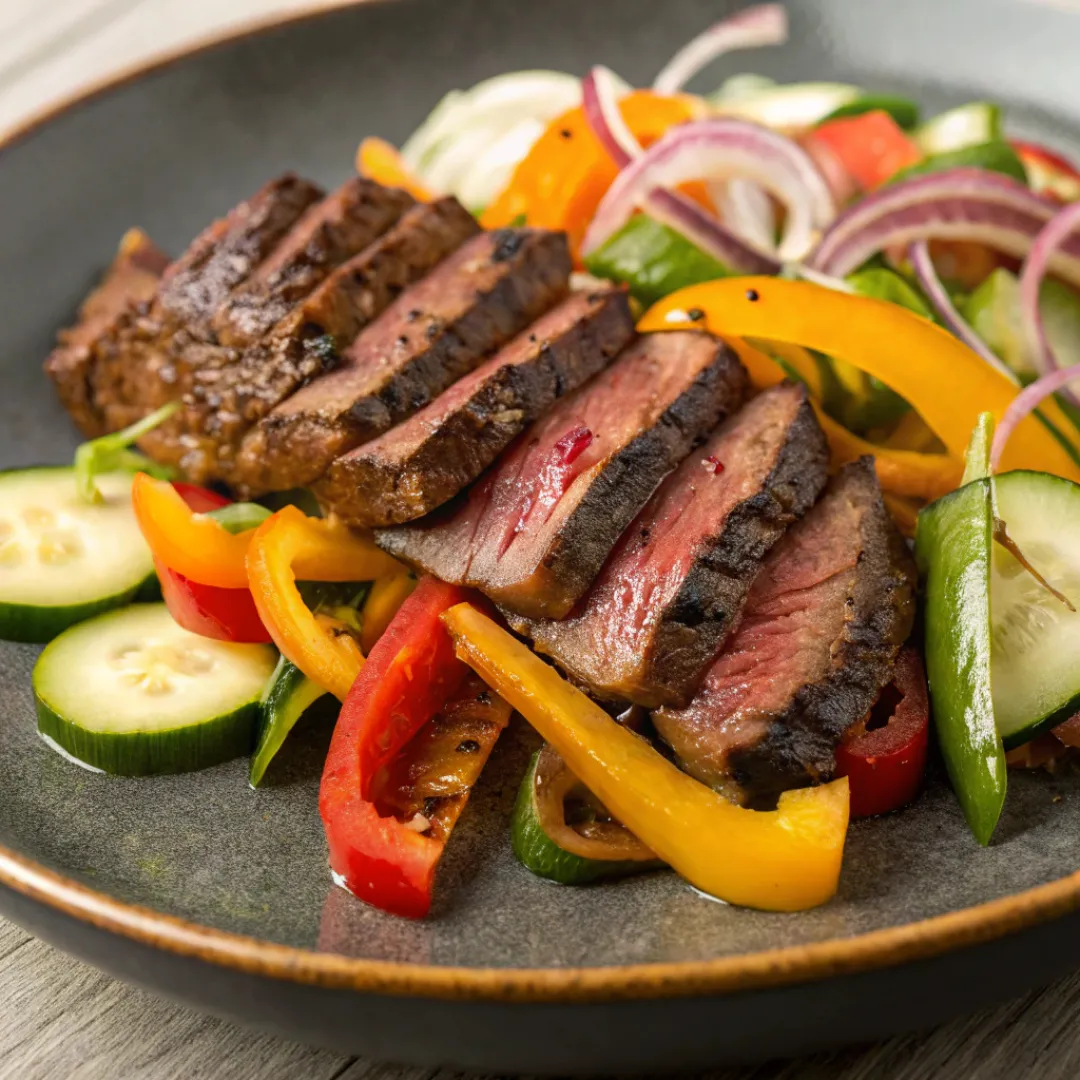Korean barbecue is famous for its savory grilled meats, but what vegetables are used for Korean barbecue to create a balanced and flavorful meal? Vegetables play a crucial role in adding variety and texture to the barbecue experience, offering a refreshing contrast to the richness of the meat. What vegetables are used for Korean barbecue? From leafy lettuce and perilla leaves to garlic, peppers, and mushrooms, these ingredients enhance every bite. Whether you enjoy Korean barbecue at a restaurant or cook it at home, knowing the right vegetable pairings helps you create an authentic and delicious meal. For more background information on Korean BBQ customs, check out this Guide to Korean BBQ Etiquette.
Lettuce (Ssam) – The Perfect Wrap for Korean BBQ
One of the most common and essential vegetables used in Korean barbecue is lettuce. Known as ssam in Korean, lettuce leaves serve as wraps for the grilled meat, rice, sauces, and other side dishes. The crispy and fresh texture of lettuce adds a refreshing element to each bite, making it a perfect complement to the rich, savory flavors of the meat.
If you’re looking to explore more options on what goes well with beef bulgogi, check out this guide to perfect pairings for beef bulgogi to discover delicious side dishes and accompaniments.
Types of Lettuce Used
Green Leaf Lettuce
This is the most common type of lettuce used in Korean barbecue. It’s soft, flexible, and easy to wrap around the fillings.
Romaine Lettuce
Romaine lettuce offers a bit more crunch and a slightly bitter taste, making it a great choice for those who want a bit more texture in their wraps.
Red Leaf Lettuce
Moreover, with its soft leaves and mildly sweet flavor, red leaf lettuce is another popular option for ssam.
How to Enjoy It: Place a piece of grilled meat on the lettuce leaf, add a small amount of rice, a dab of ssamjang (a spicy dipping sauce), and any other side dishes you like. Wrap it up and eat it in one bite!
Green Onions (Pa) – For Grilled Garnishes and Salads
Green onions, or pa in Korean, are another versatile vegetable used in Korean barbecue. You’ll often find green onions thinly sliced and served as a garnish or as part of a fresh salad that accompanies grilled meat.
Green Onion Salad (Pa Muchim)
One of the most popular ways to enjoy green onions is in a salad called pa muchim. This salad is made by slicing green onions into long, thin strips and seasoning them with a mixture of soy sauce, gochugaru (Korean chili flakes), sesame oil, and vinegar. It adds a spicy, tangy, and slightly crunchy element to the meal, which pairs wonderfully with grilled meats.
How to Enjoy It
Place a bit of the green onion salad on top of your grilled meat or add it to your lettuce wrap for an extra burst of flavor.
Mushrooms – The Meaty Vegetable
Mushrooms are a favorite vegetable for Korean barbecue since they have a hearty, meaty texture that perfectly complements the grilled meats. In fact, several types of mushrooms add their unique flavor and texture to the meal.
For instance, if you’re grilling mushrooms alongside beef bulgogi, you might want to enhance your understanding of the sauce used. Learn more about what bulgogi sauce is made of to appreciate how it blends with the flavors of the grilled vegetables.
Popular Mushroom Varieties
Enoki Mushrooms
These delicate, thin mushrooms have a mild flavor and a slightly crunchy texture. They cook quickly and absorb the flavors of the marinade or dipping sauce.
Shiitake Mushrooms
With a rich, umami flavor, shiitake mushrooms are perfect for grilling. They have a meaty texture that pairs well with beef and chicken.
King Oyster Mushrooms
Also known as Eryngii, king oyster mushrooms have a thick, chewy texture that makes them ideal for grilling. Their mild flavor takes on the smoky taste of the grill, making them a delicious addition to the barbecue.
How to Enjoy Them: Grill the mushrooms until they’re tender and slightly charred, then dip them in soy sauce or sesame oil before eating.
Zucchini (Hobak) – A Grilled Classic
Zucchini, known as hobak in Korean, is a common vegetable served at Korean barbecues. Its mild flavor and soft texture make it a great addition to the meal, especially when grilled alongside the meat. Zucchini slices absorb the smoky flavors from the grill, and they cook quickly, making them a convenient option.
How to Prepare Zucchini for Korean BBQ
Sliced
Cut the zucchini into thin, round slices about ¼ inch thick. Lightly season with salt and pepper, then grill until tender.
Grilled Whole
You can also grill the zucchini whole and slice it into pieces once cooked.
How to Enjoy It
Zucchini can be enjoyed on its own, added to lettuce wraps, or eaten with a bit of ssamjang for extra flavor.

Korean Perilla Leaves (Kkaennip) – A Unique Flavor
Perilla leaves, or kkaennip, are often used as an alternative to lettuce wraps in Korean barbecue. These leaves have a unique flavor that’s slightly minty, earthy, and a bit spicy, adding an interesting twist to your barbecue experience.
Why Perilla Leaves Are Great for Korean BBQ:
- They have a soft texture, making them easy to wrap around grilled meat and rice.
- Their distinct flavor pairs well with the savory, smoky taste of the meat.
How to Enjoy Them
Use perilla leaves in place of lettuce to wrap your grilled meat, rice, and sauce, or add them to your lettuce wrap for a combination of flavors.
Garlic (Manul) – A Flavorful Addition
Garlic is a staple ingredient in Korean barbecue, and you’ll often find whole garlic cloves on the grill. Grilling garlic brings out its sweetness and reduces its pungency, making it a delicious addition to your barbecue meal.
How Garlic Is Used in Korean BBQ
Grilled Garlic Cloves
Place whole garlic cloves on the grill until they’re soft and slightly charred. They can be eaten as a side dish or added to lettuce wraps.
Minced Garlic
You might also find minced garlic added to dipping sauces like ssamjang or sesame oil for extra flavor.
How to Enjoy It
Add grilled garlic to your lettuce wrap or eat it alongside the meat for a burst of flavor.
Sweet Potatoes (Goguma) – A Sweet and Savory Delight
Sweet potatoes, or goguma, are another popular vegetable used in Korean barbecue. They offer a sweet contrast to the savory meat, making them a perfect addition to the meal. If you’re interested in exploring other sweet vegetable treats, check out this Pumpkin Cookies recipe for a delicious dessert option that pairs well with your BBQ feast.
How to Prepare Sweet Potatoes for Korean BBQ
Grilled Whole
First, grill the sweet potatoes whole until they become soft and caramelized, then slice them into rounds.
Sliced
Alternatively, you can slice them into rounds or wedges and then grill until tender.
How to Enjoy Them
Sweet potatoes are delicious on their own or with a drizzle of honey for an extra touch of sweetness.
Cabbage (Baechu) – A Crunchy, Fresh Side
Cabbage, or baechu, often accompanies Korean barbecue as a side dish. You can use it as a wrap or prepare it in a tangy cabbage salad that adds crunch and freshness to the meal.
How to Use Cabbage
Cabbage Wraps
Use cabbage leaves to wrap grilled meat, rice, and sauces, just like you would with lettuce.
Cabbage Salad
Mix shredded cabbage with vinegar, sugar, and a bit of gochugaru to create a crunchy, tangy salad.
How to Enjoy It
Add a bit of cabbage salad to your wrap or enjoy it as a refreshing side dish between bites of grilled meat.
Bell Peppers (Piment) – A Sweet and Crunchy Addition
Bell peppers are often grilled alongside meat at Korean barbecues. Their sweet, slightly smoky flavor complements the savory meat, and their vibrant colors add visual appeal to the meal.
How to Prepare Bell Peppers for Korean BBQ
Sliced
Cut bell peppers into thick strips or rings and grill them until they’re tender.
Whole
Small bell peppers can be grilled whole and enjoyed with dipping sauces.
How to Enjoy Them
Bell peppers are great on their own or added to lettuce wraps for extra crunch and flavor.

Frequently Asked Questions
Can I use any type of lettuce for Korean barbecue?
Yes, you can use various types of lettuce, such as green leaf lettuce, romaine, or red leaf lettuce, for Korean BBQ. These varieties work well for wraps and add a refreshing crunch.
Are mushrooms a traditional vegetable for Korean BBQ?
You can commonly use mushrooms like enoki, shiitake, and king oyster for Korean BBQ. They absorb flavors well and add a meaty texture to the meal.
Can I use other vegetables for Korean BBQ besides the ones mentioned?
Absolutely! Feel free to experiment with other vegetables like carrots, asparagus, or broccoli to add variety and flavor to your Korean BBQ.
How do I prepare garlic for Korean BBQ?
For example, you can grill whole garlic cloves until they’re soft and slightly charred, or alternatively, add minced garlic to dipping sauces for extra flavor.
Are perilla leaves easy to find outside of Korea?
You can find perilla leaves in Korean or Asian grocery stores. If you don’t find them, simply use lettuce leaves as an alternative.
Conclusion
Korean barbecue is not just about the meat; rather, it’s a culinary experience that celebrates a variety of vegetables. For instance, from lettuce wraps to garlic and sweet potatoes, these vegetables add flavor, texture, and balance to the meal. As soon as you understand which vegetables to use for Korean barbecue, then you can create an authentic and delicious spread that not only enhances the rich, savory flavors of the grilled meat but also adds variety to your meal.

